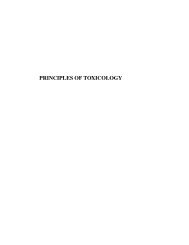Insect-pests - Biology East Borneo
Insect-pests - Biology East Borneo
Insect-pests - Biology East Borneo
You also want an ePaper? Increase the reach of your titles
YUMPU automatically turns print PDFs into web optimized ePapers that Google loves.
42 General Conclusions<br />
and stem rot in Acacia mangium. Other potential<br />
threats are less obvious. Eucalyptus spp.and Acacia<br />
mangium have been grown in Indonesia over fairly<br />
large area for a longer period than other species in this<br />
group. Many pest problems develop over a long period,<br />
facilitated by favourable conditions provided by<br />
extensive monocultures. Therefore, the risk of <strong>pests</strong><br />
and diseases for most species in this group is<br />
unpredictable. Experience with large monocultures of<br />
the same species in other countries can provide some<br />
pointers to the potential problems, although this is not<br />
fully dependable. For example, Pinus merkusii is<br />
plagued by shoot borer in Philippines, Thailand,<br />
Vietnam, India and Northern Sumatra, but not in Java.<br />
We have the advantage of such experience in the case<br />
of Eucalyptus spp., Gmelina arborea and to some<br />
extent, Acacia mangium.<br />
Eucalypts have been generally pest free, except for<br />
subterranean termites attacking the tap root during the<br />
establishment stage. Diseases create problems in<br />
nursery, but are manageable. Eucalyptus spp. are<br />
susceptible to foliar diseases caused by fungi in humid<br />
environments, but selection of resistant species and<br />
provenances has circumvented this problem. In<br />
Indonesia, some species e.g. E. urophylla, have been<br />
found to be susceptible to root rot but others e.g.<br />
E. pellita, are less so. These problems have led to the<br />
present trend in Indonesia is to replace Eucalyptus<br />
spp. with Acacia.spp.<br />
Gmelina arborea, except for minor problems with a<br />
stem borer, is currently pest free in Indonesia, as in<br />
many other countries where it has been planted as an<br />
exotic, but the situation needs monitoring, as it suffers<br />
from serious <strong>pests</strong> in its native range. Some companies<br />
are now enlarging the area under Gmelina arborea, in<br />
place of Acacia mangium, although it requires more<br />
fertile sites than the acacia.<br />
Acacia mangium suffered a heart-rot problem which<br />
threatened to proliferate in Malaysia, but it is being<br />
kept in check by enlarging the genetic base of planting<br />
stock and by planting the heart rot resistant hybrid,<br />
A. mangium x A. auriculiformis. It has been<br />
suggested that the heart and root rot problems are<br />
the result of mismatching of the species with the<br />
sites, with the absence of a seasonal dry spell<br />
facilitating the development of the diseases (Arentz<br />
1996; Lee and Arentz 1997). The situation therefore<br />
needs monitoring. Although there are no serious<br />
insect pest problems at present, the situation also<br />
needs attention, in view of the potential threat of<br />
the mosquito bug, Helopeltis spp. becoming adapted<br />
as more of the Indonesian landscape is planted with<br />
A. mangium. There is also the treat of unpredictable<br />
caterpillar outbreaks, as indicated by some instances<br />
in Malaysia.<br />
In the case of other new species, most of which are<br />
indigenous, there are no serious pest or disease<br />
problems, at present. For some of them, limited<br />
experience in other countries or the chemical profile<br />
of the species (e.g. Azadirachta spp.) suggests that<br />
there is little risk (Table 5.2) but for others the risk is<br />
unpredictable.<br />
Future most important <strong>pests</strong> and diseases<br />
If one insect pest is to be named as the most dangerous<br />
to Indonesian forest plantations in future, the choice<br />
will undoubtedly fall on the sengon borer, Xystrocera<br />
festiva. Its population is likely to increase further as<br />
more area is brought under P. falcataria all across<br />
Indonesia due to its promotion by industrial and<br />
agroforestry plantation initiatives. Xystrocera festiva has<br />
a number of alternative hosts, in the family<br />
Leguminosae, including Albizia spp. and Acacia spp.<br />
Although A. mangium is not a favoured host of<br />
X. festiva, its expansion may also help to increase<br />
X. festiva population. This borer seems to be welladapted<br />
to Indonesia as it is replaced in neighbouring<br />
countries by X. globosa, a species also present in low<br />
numbers in Indonesia.<br />
Another insect likely to build up in future is Helopeltis.<br />
Many closely related species of Helopeltis are<br />
important <strong>pests</strong> of horticultural plantations in the<br />
tropics and populations have been increasing in young<br />
A. mangium plantations, particularly in Sumatra (see<br />
Section 4.1). It has a history of outbreaks in cashew,<br />
tea and neem in India and in tea and Eucalyptus spp.<br />
in Sumatra. Care must be exercised to prevent the<br />
build up of Helopeltis species.<br />
Good quality timber will remain in demand despite of<br />
the present emphasis on pulpwood species.<br />
Improvements in machinery and utilisation methods<br />
will enable smaller dimension timbers to be used
















